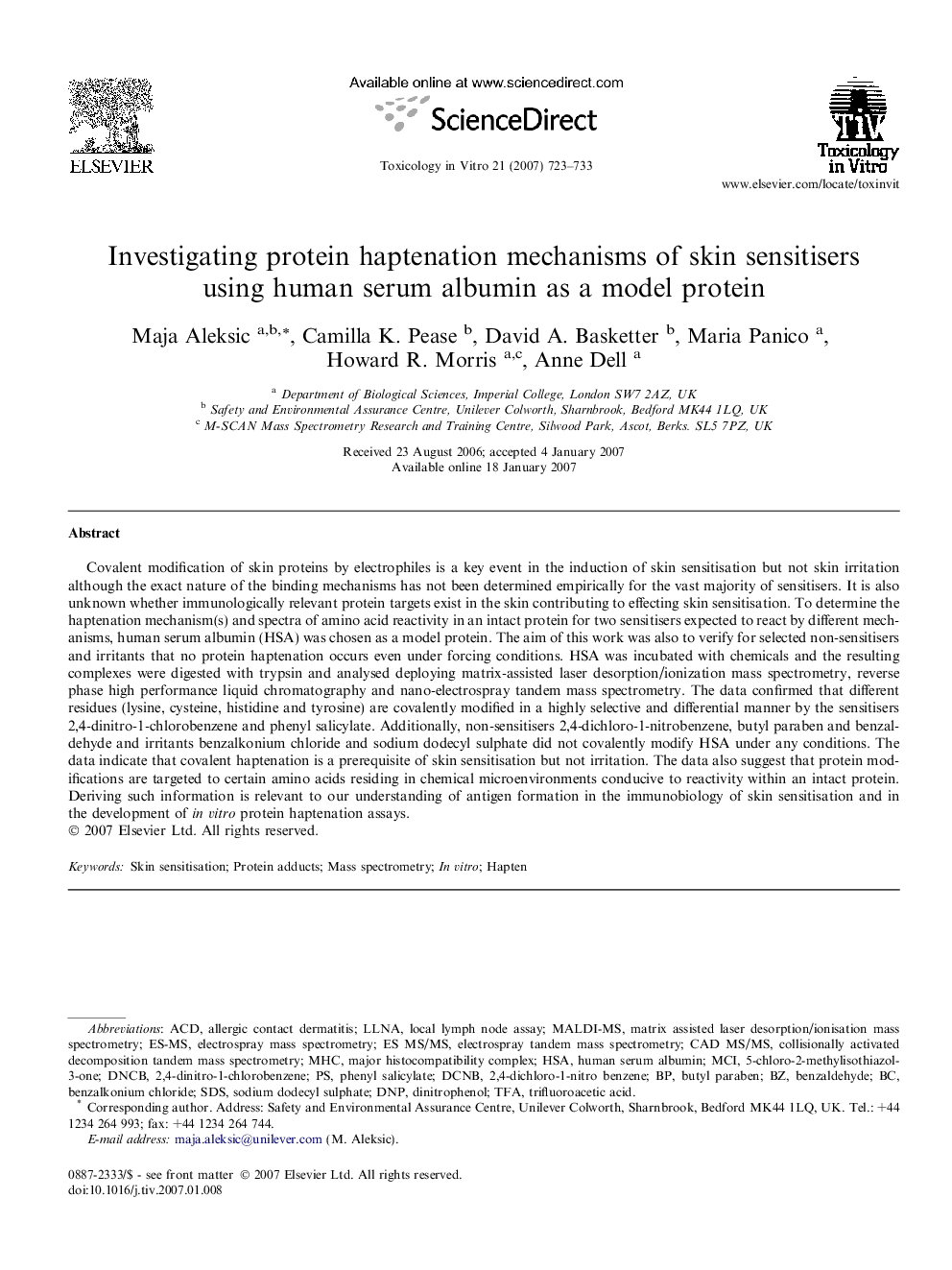| کد مقاله | کد نشریه | سال انتشار | مقاله انگلیسی | نسخه تمام متن |
|---|---|---|---|---|
| 2603314 | 1133816 | 2007 | 11 صفحه PDF | دانلود رایگان |

Covalent modification of skin proteins by electrophiles is a key event in the induction of skin sensitisation but not skin irritation although the exact nature of the binding mechanisms has not been determined empirically for the vast majority of sensitisers. It is also unknown whether immunologically relevant protein targets exist in the skin contributing to effecting skin sensitisation. To determine the haptenation mechanism(s) and spectra of amino acid reactivity in an intact protein for two sensitisers expected to react by different mechanisms, human serum albumin (HSA) was chosen as a model protein. The aim of this work was also to verify for selected non-sensitisers and irritants that no protein haptenation occurs even under forcing conditions. HSA was incubated with chemicals and the resulting complexes were digested with trypsin and analysed deploying matrix-assisted laser desorption/ionization mass spectrometry, reverse phase high performance liquid chromatography and nano-electrospray tandem mass spectrometry. The data confirmed that different residues (lysine, cysteine, histidine and tyrosine) are covalently modified in a highly selective and differential manner by the sensitisers 2,4-dinitro-1-chlorobenzene and phenyl salicylate. Additionally, non-sensitisers 2,4-dichloro-1-nitrobenzene, butyl paraben and benzaldehyde and irritants benzalkonium chloride and sodium dodecyl sulphate did not covalently modify HSA under any conditions. The data indicate that covalent haptenation is a prerequisite of skin sensitisation but not irritation. The data also suggest that protein modifications are targeted to certain amino acids residing in chemical microenvironments conducive to reactivity within an intact protein. Deriving such information is relevant to our understanding of antigen formation in the immunobiology of skin sensitisation and in the development of in vitro protein haptenation assays.
Journal: Toxicology in Vitro - Volume 21, Issue 4, June 2007, Pages 723–733